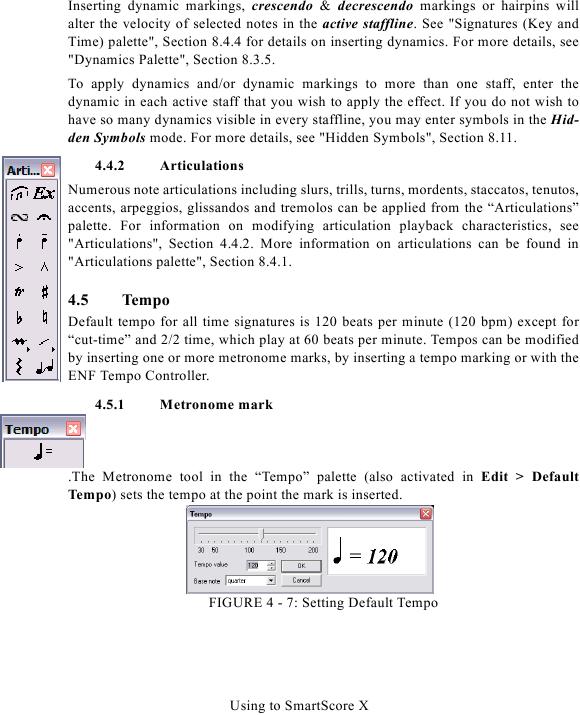Inserting dynamic markings, crescendo & decrescendo markings or hairpins will
To apply dynamics and/or dynamic markings to more than one staff, enter the
dynamic in each active staff that you wish to apply the effect. If you do not wish to
have so many dynamics visible in every staffline, you may enter symbols in the Hid-
4.4.2
Articulations
Numerous note articulations including slurs, trills, turns, mordents, staccatos, tenutos,
accents, arpeggios, glissandos and tremolos can be applied from the "Articulations"
palette. For information on modifying articulation playback characteristics, see
4.5
Tempo
Default tempo for all time signatures is 120 beats per minute (120 bpm) except for
"cut-time" and 2/2 time, which play at 60 beats per minute. Tempos can be modified
by inserting one or more metronome marks, by inserting a tempo marking or with the
ENF Tempo Controller.
4.5.1
Metronome mark
.The Metronome tool in the "Tempo" palette (also activated in Edit > Default
Tempo) sets the tempo at the point the mark is inserted.
FIGURE 4 - 7: Setting Default Tempo
Using to SmartScore X

